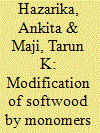| Srl | Item |
| 1 |
ID:
146891


|
|
|
|
|
| Summary/Abstract |
This article, in a study of amoral cost–benefit analysis, legitimacy and capacity to obey the law, seeks to understand why Chinese farmers obey or break pesticide rules. It uses data gathered through intensive fieldwork at a local level, including interviews with 31 pesticide experts and officials and 119 vegetable farmers in central China. It uncovers an enforcement–compliance paradox: a situation where law enforcement concentrates exactly on those rules that are least likely to be broken and on those regulated actors who are most likely to comply. It finds two explanations. First, enforcement policy simply may not be aware of which rules are more likely to be complied with and which regulated actors are more likely to comply even when there is limited deterrence. Second, technocratic risk-averse enforcement policy may be oriented towards those rules and actors for which violation – theoretically – results in the greatest damage, not towards those rules that are more likely to be broken and those actors who are more likely to break them.
|
|
|
|
|
|
|
|
|
|
|
|
|
|
|
|
| 2 |
ID:
130735


|
|
|
|
|
| Publication |
2014.
|
| Summary/Abstract |
Technological development of wood polymer composites (WPC) is a very promising approach to overcome most of the disadvantageous properties of wood products, for example their poor mechanical strength, poor dimensional stability, susceptibility to fungal attack, weathering and the like. To find the substitute for costly items of hard wood, suitable technologies have been developed to modify softwood to meet specific end-use requirements. Various vinyl monomers and/or copolymers or thermosetting resin in combination with different types of cross linking agents, flame retarding agents have been used to improve the properties of wood. Nanotechnology is a new area of science and technology which opens up new opportunities to develop wood based products with desired properties. Now-a-days government is making strict legislations to promote green technology for the protection of environment world wide. With the depletion of petroleum resources at alarming rate, it is high time to replace petroleum-based products by some sustainable alternative products based on vegetable biomass. The bio-based resins obtained from renewable feedstock have been widely utilized by taking the advantages of easy availability, renewable nature and low cost. The green route of modification of wood is widely encouraged. With the progress of technological development, now it is possible to avoid the hazardous influence of organic solvents by using water as solvent or diluents formodification of wood. WPC has got tremendous scope for use in diverse areas of applications.
|
|
|
|
|
|
|
|
|
|
|
|
|
|
|
|